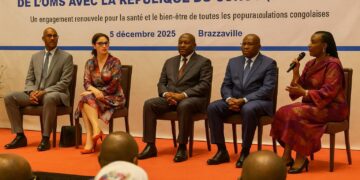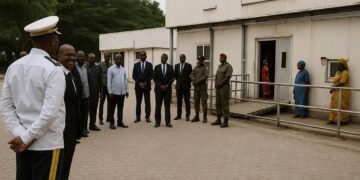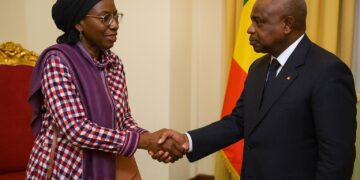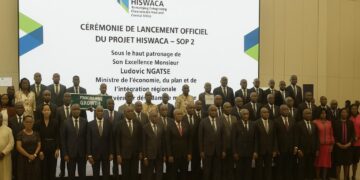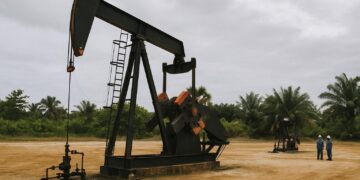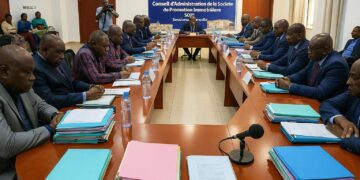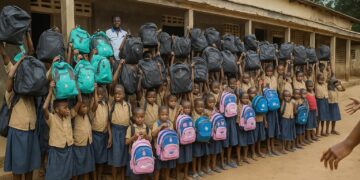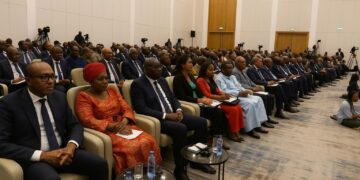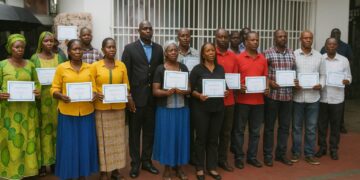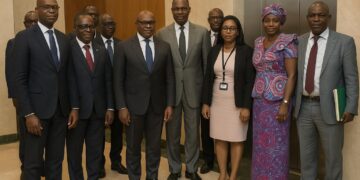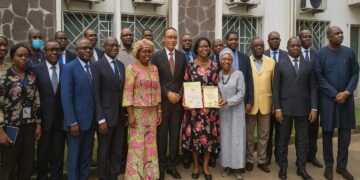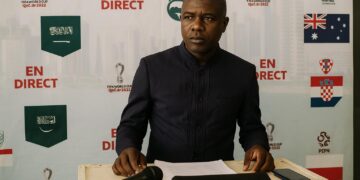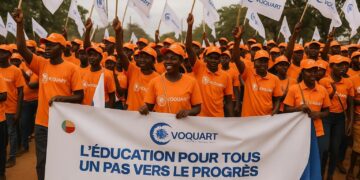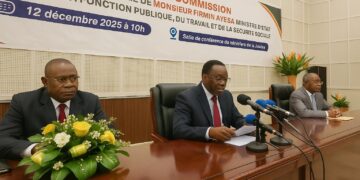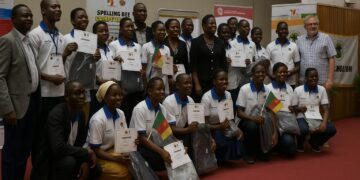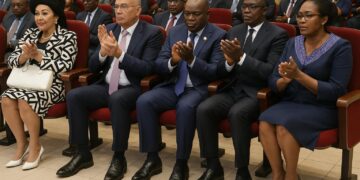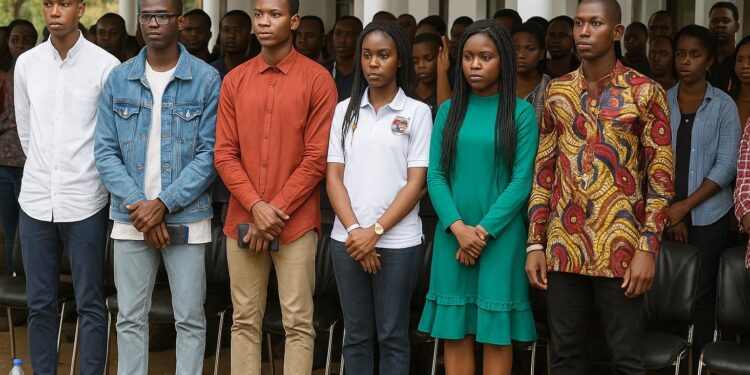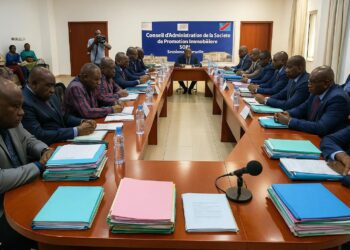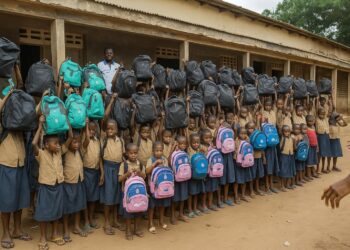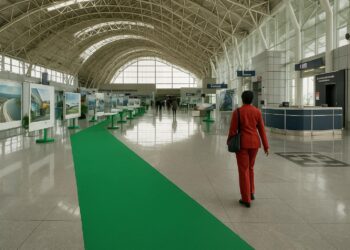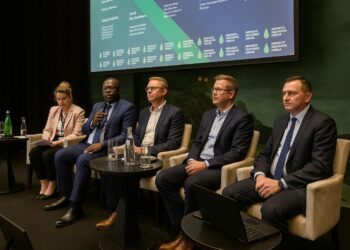Corporate backing of higher education
Soremi, the Chinese-owned polymetallic miner operating in the Sangha region, has strengthened its corporate social footprint by delivering a “smart classroom” to the Denis-Sassou N’Guesso University (UDSN) at Kintélé.
The facility, officially opened on 28 October by university president Professor Ange Antoine Abena, is depicted by stakeholders as a decisive step toward aligning Congo’s higher-education ecosystem with global digital-learning standards.
Digital infrastructure at UDSN
The smart classroom seats 36 students in a fully networked environment and features eight interactive high-definition screens that can be synchronised for group work, remote lectures or hybrid tutorials.
High-speed connectivity and collaborative software suites have been pre-installed, sparing faculty the usual procurement hurdles and allowing immediate integration into engineering, mining and energy modules.
Professor Abena thanked Soremi’s chief executive Cheng Sheng Hong for what he called a “tangible investment in youth capital”, pledging diligent maintenance so the outlay generates sustained learning returns.
The minister of Higher Education, Delphine Édith Emmanuel, framed the donation within a broader policy triangle of knowledge, cooperation and strategic partnership that underpins the government’s drive to modernise curricula without burdening public finances.
University administrators estimate the facility can cut lecture-capture costs by 60 percent and open elective courses to students on regional campuses through multi-cast technology, a pilot that could eventually serve 12,000 learners across the republic.
Energy-efficient LEDs, occupancy sensors and recycled-wood desktops align the room with green-building guidelines the university adopted last year, limiting operational costs to under 70,000 CFA francs per month, according to facility managers.
Faculty in geosciences intend to integrate real-time data from Soremi’s exploration rigs into coursework, allowing undergraduates to model ore-body anomalies on the interactive wall rather than relying solely on static maps.
A partnership anchored in Belt and Road
Soremi’s initiative flows from a 2021 memorandum linking the mining company, UDSN and the China University of Geosciences in Beijing, an academic bridge that mirrors the Belt and Road’s emphasis on skills transfer alongside infrastructure.
Under the accord, Soremi already sponsors merit scholarships for top students at the School of Mines, Hydraulics and Energy, anchoring a talent pipeline relevant to its Mayoko iron ore project and wider national diversification goals.
The 40 million-CFA-franc classroom therefore supplements financial aid with physical infrastructure, signalling what Chinese ambassador Anne labelled at the launch as “long-term commitment rather than one-off charity”.
For Brazzaville, the model aligns with President Denis Sassou Nguesso’s 2022-2026 National Development Plan, which assigns priority to digitalisation of public services and enhanced science, technology, engineering and mathematics education.
Similar classroom grants have been rolled out in Djibouti, Ethiopia and Guinea within the same Belt and Road education strand, positioning Congo to plug into an emerging pan-African research network that shares open-access geological datasets.
Since 2022, thirty-six UDSN laureates have received annual stipends of 2 million CFA francs from Soremi, easing tuition pressures and enabling field trips to core-sampling sites in the northern districts.
Building skills for strategic sectors
Beyond academia, the smart classroom is expected to sharpen human capital for energy, mining and telecoms—sectors that command seventy percent of Congo’s export revenues and increasingly require data-literate technicians.
Industry executives note that interactive simulations can replicate drilling operations, beneficiation processes or grid-stability scenarios, reducing the cost of on-site training.
Cheng Sheng Hong revealed that Soremi is preparing a separate internship platform for UDSN students and plans to co-finance a modern laboratory by 2026, moves consistent with the firm’s need for metallurgists and automation engineers.
Since entering production, Soremi says it has generated thousands of direct and indirect jobs while sourcing goods locally, a narrative welcomed by policy-makers aiming to translate mineral wealth into inclusive growth.
A recent World Bank note projects that Congo will need 10,000 additional engineers by 2030 to meet infrastructure targets; early exposure to smart-learning tools can shorten onboarding times once graduates enter EPC contractors or state utilities.
What investors should watch
For investors, the project illustrates how corporate tax incentives can be matched with visible community investment, a criterion that regional banks and development-finance institutions increasingly factor into credit assessments.
The classroom also signals progress on environmental, social and governance indicators, potentially improving Congo’s country risk profile at a time when the sovereign seeks concessional climate finance and private capital for energy transition projects.
Observers will track whether follow-on laboratories, broadband upgrades and research grants materialise, turning the single room into a nucleus for an eventual technology park around the Kintélé campus.
If replicated across other faculties and regions, such smart facilities could gradually lower the skills gap that currently drives outbound migration, reinforcing Congo-Brazzaville’s ambition to retain talent and diversify its economy beyond hydrocarbons.
Credit-rating agency Moody’s has flagged educational spending above one percent of gross revenue as a positive ESG differentiator for mining companies operating in frontier markets; Soremi’s latest contribution nudges the firm above that threshold, according to figures shared at the ceremony.

